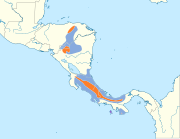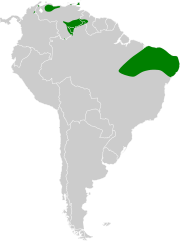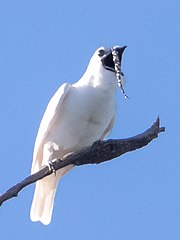Superregnum: Eukaryota
Cladus: Unikonta
Cladus: Opisthokonta
Cladus: Holozoa
Regnum: Animalia
Subregnum: Eumetazoa
Cladus: Bilateria
Cladus: Nephrozoa
Superphylum: Deuterostomia
Phylum: Chordata
Subphylum: Vertebrata
Infraphylum: Gnathostomata
Megaclassis: Osteichthyes
Cladus: Sarcopterygii
Cladus: Rhipidistia
Cladus: Tetrapodomorpha
Cladus: Eotetrapodiformes
Cladus: Elpistostegalia
Superclassis: Tetrapoda
Cladus: Reptiliomorpha
Cladus: Amniota
Classis: Reptilia
Cladus: Eureptilia
Cladus: Romeriida
Subclassis: Diapsida
Cladus: Sauria
Infraclassis: Archosauromorpha
Cladus: Crurotarsi
Divisio: Archosauria
Cladus: Avemetatarsalia
Cladus: Ornithodira
Subtaxon: Dinosauromorpha
Cladus: Dinosauriformes
Cladus: Dracohors
Cladus: Dinosauria
Cladus: Saurischia
Cladus: Eusaurischia
Subordo: Theropoda
Cladus: Neotheropoda
Cladus: Averostra
Cladus: Tetanurae
Cladus: Avetheropoda
Cladus: Coelurosauria
Cladus: Tyrannoraptora
Cladus: Maniraptoromorpha
Cladus: Maniraptoriformes
Cladus: Maniraptora
Cladus: Pennaraptora
Cladus: Paraves
Cladus: Eumaniraptora
Cladus: Avialae
Infraclassis: Aves
Cladus: Avebrevicauda
Cladus: Pygostylia
Cladus: Ornithothoraces
Cladus: Ornithuromorpha
Cladus: Carinatae
Parvclassis: Neornithes
Cohors: Neognathae
Cladus: Neoaves
Cladus: Telluraves
Cladus: Australaves
Ordo: Passeriformes
Subordo: Tyranni
Infraordo: Tyrannides
Parvordo: Tyrannida
Familia: Cotingidae
Genus: Procnias
Species: P. albus - P. averano - P. nudicollis - P. tricarunculatus
Name
Procnias Illiger, 1811
Typus: Ampelis averano Hermann, 1783 = Procnias averano
Synonyms
Casmarhinchos Temminck, 1820
Casmarhynchos Temminck, 1821 (orth. err.)
Casmarhynchus Spix, 1825 (orth. err.) nec Casmarhynchus Reichenbach, 1850
Casmarynchos Wied-Neuwied, 1830 (orth. err.)
Cosmarhynchus Bonaparte, 1831 (orth. err.)
Cashmorhynchus Swainson in Richardson, 1832 (orth. err.)
Casmorhynchus Swainson, 1836 (orth. err.)
Chasmarrhynchus Burmeister, 1837 (orth. err.)
Chasmarhynchus Burmeister, 1840 (orth. err.)
Chasmorhynchus Strickland, 1842 Ann.Mag.Nat.Hist. 8 p. 373 BHL (emend.)
Averanus Rafinesque, 1815
Arapunga Lesson, 1828 Man.Orn p. 213 BHL
Averano Lesson, 1830 TraitedOrn. p. 364 BHL
Eulopogon Gloger, 1841 Gemein.Handb.-undHilfsb. p. 321 BHL
Calloprocnias Chubb, 1920 BBOC p. 107 BHL
Vavasouria Chubb, 1920 BBOC p. 107 BHL
Procnia [variation]
References
Primary references
Illiger, J.K.W. 1811. Prodromus systematis mammalium et avium additis terminis zoographicis utriusque classis, eorumque versione germanica. C. Salfield: Berolini. xviii + 302 pp. BHL Reference page. p. 228
Vernacular names
English: Bellbirds
español: Campaneros
português: Arapongas
Neotropical bellbird (or simply bellbird) is the common name given to passerine birds of the genus Procnias, found in the Neotropics. They are members of the cotinga family. They are all restricted to tropical or subtropical humid forested regions, often in low mountains or foothills. As indicated by their common name, they all have extremely loud calls that are reminiscent of a metal bell being rung.
Three of the four species are restricted to South America, while the last, the three-wattled bellbird, is restricted to southern Central America.[2]
They are strongly sexually dimorphic. Males have an at least partially white plumage, and facial wattles or bare facial skin. Females lack the wattles/bare facial skin, and are overall olive with yellowish streaks below.[2]
Taxonomy
The genus Procnias was introduced in 1811 by the German zoologist Johann Karl Wilhelm Illiger.[3] The name comes from Greek mythology, Procne was an Athenian princess who was metamorphosed into a swallow.[4] The type species was designated as the bearded bellbird by George Gray in 1840.[5][6]
The genus contains four species.[7]
| Common name | Scientific name and subspecies | Range | Size and ecology | IUCN status and estimated population |
|---|---|---|---|---|
| Three-wattled bellbird
|
Procnias tricarunculatus (Verreaux & Verreaux, 1853) |
Costa Rica, to eastern Honduras, Nicaragua and western Panama |
Size: Habitat: Diet: |
VU
|
| White bellbird
|
Procnias albus (Hermann, 1783) |
Guianas, Venezuela and Brazil (Pará) |
Size: Habitat: Diet: |
LC
|
| Bearded bellbird
|
Procnias averano (Hermann, 1783)
Two subspecies
|
Venezuela and adjacent parts of Colombia and Guyana, Trinidad & Tobago and northeastern Brazil |
Size: Habitat: Diet: |
LC |
| Bare-throated bellbird | Procnias nudicollis (Vieillot, 1817) |
Atlantic forest and adjacent moist areas |
Size: Habitat: Diet: |
NT
|
|---|
References
"Cotingidae". aviansystematics.org. The Trust for Avian Systematics. Retrieved 2023-07-24.
Snow, David W. (2004). "Family Cotingidae (Cotingas)". In del Hoyo, J.; Elliott, A.; Christie, D.A. (eds.). Handbook of the Birds of the World. Vol. 9: Cotingas to Pipits and Wagtails. Barcelona, Spain: Lynx Edicions. pp. 32–108 [104–105]. ISBN 978-84-87334-69-6.
Illiger, Johann Karl Wilhelm (1811). Prodromus systematis mammalium et avium (in Latin). Berolini [Berlin]: Sumptibus C. Salfeld. p. 228.
Jobling, James A. (2010). The Helm Dictionary of Scientific Bird Names. London: Christopher Helm. p. 317. ISBN 978-1-4081-2501-4.
Gray, George Robert (1840). A List of the Genera of Birds : with an Indication of the Typical Species of Each Genus. London: R. and J.E. Taylor. p. 34.
Traylor, Melvin A. Jr, ed. (1979). Check-List of Birds of the World. Vol. 8. Cambridge, Massachusetts: Museum of Comparative Zoology. p. 305.
Gill, Frank; Donsker, David; Rasmussen, Pamela, eds. (July 2021). "Cotingas, manakins, tityras, becards". IOC World Bird List Version 11.2. International Ornithologists' Union. Retrieved 7 December 2021.
Further reading
Wikimedia Commons has media related to Procnias.
Snow, D.W. (1982). The Cotingas: Bellbirds, Umbrella birds and their allies. British Museum Press. ISBN 0-19-858511-X
Retrieved from "http://en.wikipedia.org/"
All text is available under the terms of the GNU Free Documentation License





